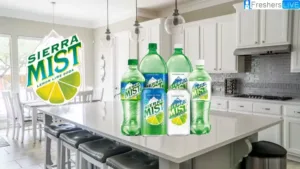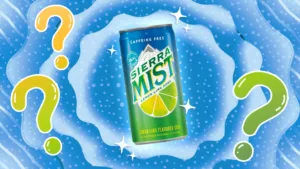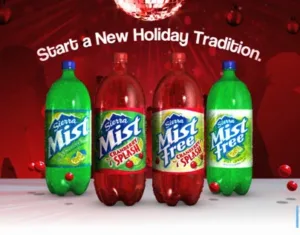Sierra Mist: For years, Sierra Mist was a beloved citrus-flavored soda that quenched the thirst of many soda enthusiasts. However, its sudden disappearance from store shelves left fans puzzled and disappointed. The discontinuation of Sierra Mist wasn’t just a random business decision; it was influenced by a myriad of factors that shaped the fate of this once-popular beverage.

-
PepsiCo Portfolio Streamlining
To streamline its product portfolio, PepsiCo made strategic decisions to focus on its most profitable brands. Sierra Mist, although cherished by many, found itself in the crosshairs as the company sought to optimize its product offerings.
-
Rebranding Efforts
PepsiCo aimed to revitalize its carbonated beverage lineup, leading to the introduction of Mist Twst in 2016. This rebranding initiative was a bid to modernize the Sierra Mist brand and appeal to a broader audience. Unfortunately, the attempt to reinvent the soda may have contributed to the decline in its popularity.
-
Changing Consumer Preferences
The beverage landscape is dynamic, with consumer preferences constantly evolving. As tastes shifted towards healthier and natural alternatives, Sierra Mist’s artificial flavoring and high sugar content may have lost appeal among health-conscious consumers.

-
Sugar Content Concerns
With the growing emphasis on reducing sugar intake and combating obesity, Sierra Mist’s relatively high sugar content may have played a role in its discontinuation. Consumers were increasingly seeking beverages with lower sugar levels or opting for alternatives like sparkling water.
-
Intense Competition
The beverage industry is highly competitive, with new products constantly entering the market. Sierra Mist faced stiff competition from both traditional soda brands and emerging players in the flavored beverage category, making it challenging to maintain a dominant market position.
-
Shifting Trends in Carbonated Drinks
The declining popularity of traditional carbonated sodas contributed to the challenges faced by Sierra Mist. As consumers embraced a wider variety of beverages, including energy drinks, flavored waters, and functional beverages, Sierra Mist struggled to remain a preferred choice.
-
Distribution Challenges
Effective distribution is crucial for the success of any beverage brand. Sierra Mist faced challenges in maintaining widespread availability, especially in regions where other competing products were gaining a stronger foothold. Limited visibility on store shelves can significantly impact a product’s sales.

-
Marketing and Advertising
Successful marketing is essential for keeping a brand alive in the minds of consumers. If a brand fails to adapt its marketing strategies to changing consumer trends or struggles to resonate with its target audience, it may face a decline in sales.
-
Economic Factors
Economic conditions play a vital role in consumer spending patterns. During periods of economic uncertainty, consumers may opt for more cost-effective choices, and premium sodas like Sierra Mist could suffer from a decrease in demand.
-
Environmental Considerations
Increasing environmental awareness has led consumers to scrutinize the sustainability practices of companies. Sierra Mist’s packaging and production methods may not have aligned with the growing demand for environmentally friendly products, potentially contributing to its discontinuation.
-
Supply Chain Issues
Disruptions in the supply chain, whether due to natural disasters, economic crises, or geopolitical tensions, can impact the availability of products. Sierra Mist may have faced challenges in maintaining a consistent supply, affecting its market presence.
-
Flavor Profile
While Sierra Mist had a distinctive citrus flavor, changing consumer preferences for bolder and more unique taste experiences could have played a role in its decline. The soda’s flavor may have been perceived as too generic compared to newer, more innovative offerings in the market.
-
Corporate Decision-Making
Ultimately, the decision to discontinue Sierra Mist rested on corporate strategy and profitability. As PepsiCo evaluated its brand portfolio and market dynamics, discontinuing Sierra Mist may have been deemed a necessary step to allocate resources more effectively.

Conclusion
The discontinuation of Sierra Mist was a result of a complex interplay of factors, ranging from shifting consumer preferences to corporate strategy and market dynamics. While fans of the soda may lament its departure, the ever-changing landscape of the beverage industry continues to shape the fate of beloved products.
As Sierra Mist fades into the annals of soda history, it serves as a reminder of the constant evolution and adaptation required in the world of consumer goods.
WRITTEN BY ALEX

